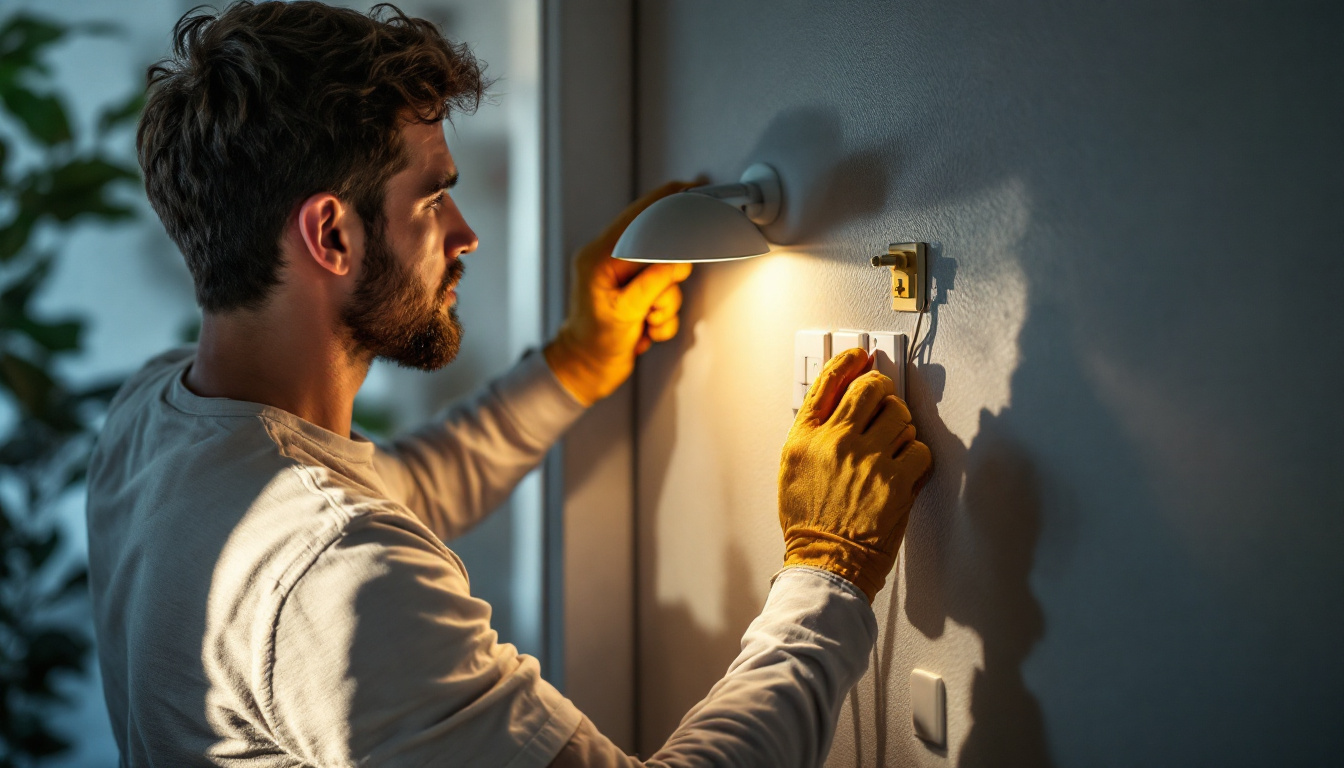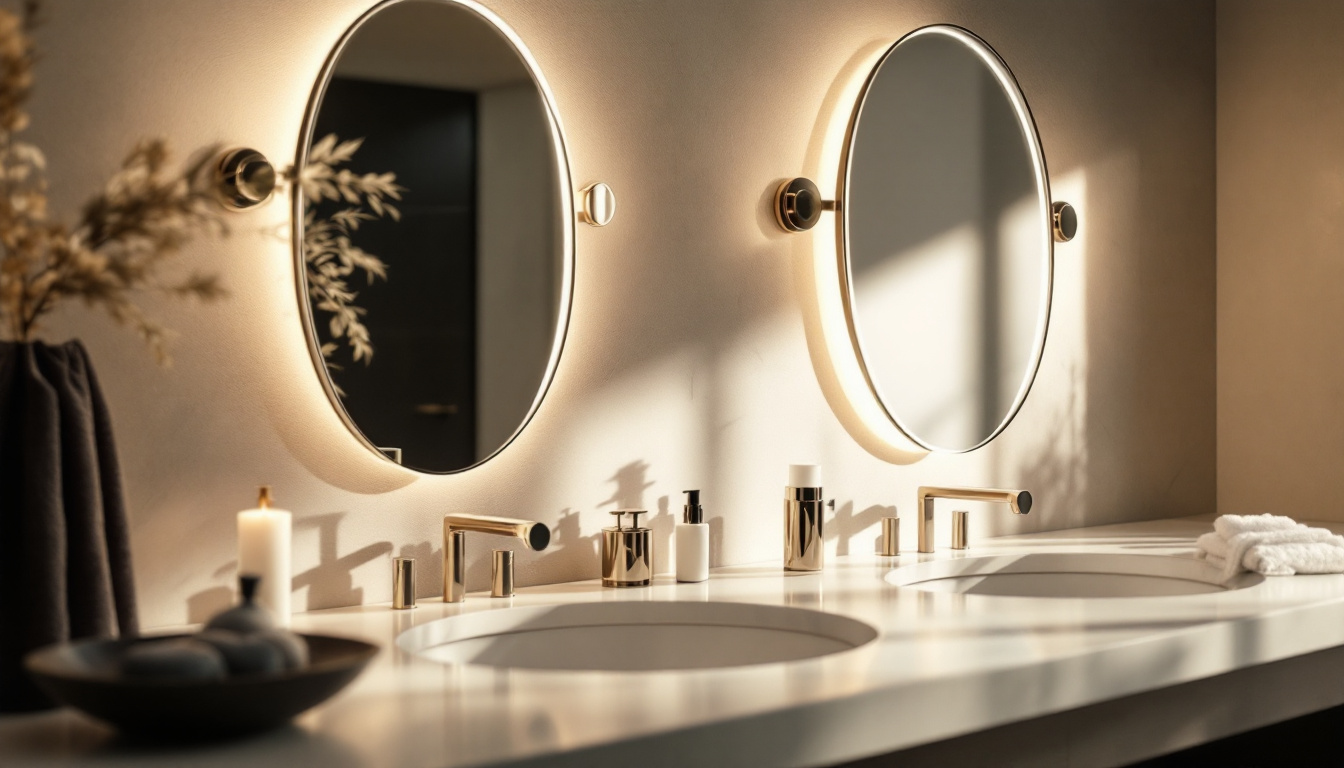

electrical switches are integral components in any lighting system, serving as the primary interface between users and their lighting environments. For lighting contractors, understanding the various types of switches, their applications, and installation techniques is crucial. This guide delves into the essentials of electrical switches, equipping contractors with the knowledge needed to make informed decisions and enhance their service offerings.
Electrical switches come in various forms, each designed to meet specific needs and applications. Understanding these types is essential for contractors to select the right switch for the job.
The single-pole switch is the most common type used in residential settings. It controls a light fixture from one location, making it straightforward and easy to use. Typically, these switches have two terminals and are available in various styles and finishes, allowing for aesthetic customization.
When installing single-pole switches, contractors should ensure that they are positioned at a comfortable height and are easily accessible. Additionally, it is crucial to follow local electrical codes to ensure safety and compliance. Furthermore, the choice of materials can also play a significant role in the longevity of the switch; for example, switches made from durable thermoplastic can withstand wear and tear better than cheaper alternatives. This attention to detail not only enhances functionality but also contributes to the overall safety of the electrical system.
Three-way switches are essential for controlling a single light fixture from two different locations. This is particularly useful in hallways, staircases, and large rooms. The installation involves two switches connected by traveler wires, allowing for flexibility in lighting control.
Contractors should be aware that wiring three-way switches can be more complex than single-pole switches. Proper labeling of wires during installation is vital to avoid confusion and ensure functionality. Understanding the wiring diagrams is also essential for troubleshooting any issues that may arise. In addition, using three-way switches can significantly enhance the convenience of navigating larger spaces, as it eliminates the need to return to a single switch to turn off the lights. This feature is especially beneficial for families with children or elderly members who may require additional assistance in moving around the home safely.
Dimmer switches provide users with the ability to adjust the brightness of their lighting, creating ambiance and energy savings. These switches come in various forms, including rotary, slide, and smart dimmers. Smart dimmers can be controlled via mobile apps or voice commands, making them increasingly popular in modern homes.
When installing dimmer switches, contractors should consider the compatibility with the type of bulbs being used, as not all dimmers work with LED or CFL bulbs. Providing clients with information on the benefits of dimming capabilities can enhance customer satisfaction and lead to repeat business. Additionally, the ability to customize lighting levels can contribute to energy efficiency, as homeowners can reduce electricity consumption during times when full brightness is unnecessary. This not only lowers utility bills but also extends the lifespan of light bulbs, making dimmer switches a smart investment for both the environment and the homeowner’s wallet.
Understanding the ratings and specifications of electrical switches is crucial for ensuring safety and functionality. Lighting contractors must be familiar with the various aspects that define a switch’s performance.
Every electrical switch has a specified voltage and current rating, which indicates the maximum load it can handle. Typical residential switches are rated for 120 volts and can handle various amperages, usually between 15 to 20 amps. It is essential for contractors to select switches that match the electrical load of the fixtures they control.
Using a switch beyond its rated capacity can lead to overheating, failure, or even fire hazards. Therefore, contractors should always verify the specifications of the switches they choose and ensure they are suitable for the intended application. Additionally, understanding the difference between single-pole, three-way, and four-way switches is critical, as they each serve unique functions in circuit configurations. For instance, three-way switches allow for control of a single light fixture from two different locations, making them ideal for hallways or large rooms.
The material and construction quality of a switch can significantly impact its durability and performance. High-quality switches are typically made from robust materials that can withstand wear and tear over time. Contractors should look for switches with good insulation properties and corrosion-resistant finishes, especially in environments with high humidity or exposure to the elements.
Investing in quality switches not only enhances the longevity of the installation but also reflects positively on the contractor’s reputation. Clients appreciate durable and reliable products, which can lead to referrals and repeat business. Furthermore, switches that feature a well-designed mechanism can provide a smoother operation, reducing the risk of mechanical failure. This can be particularly important in high-usage areas, where frequent toggling can wear down inferior products quickly.
Electrical switches must comply with national and local electrical codes and standards. Organizations such as the National Electrical Manufacturers Association (NEMA) and Underwriters Laboratories (UL) provide guidelines that ensure safety and reliability in electrical products.
Contractors should stay updated on relevant codes and standards to ensure that their installations are compliant. This not only protects the safety of the occupants but also shields the contractor from potential liability issues. Additionally, being knowledgeable about energy-efficient switches, such as those that are compatible with dimmers or smart home systems, can provide contractors with a competitive edge. These modern switches often come with features that enhance energy conservation, allowing clients to save on their electricity bills while contributing to a more sustainable environment.
Proper installation of electrical switches is paramount for ensuring functionality and safety. Following best practices can help contractors deliver high-quality work that meets client expectations.
Before beginning the installation, contractors should conduct a thorough assessment of the site. This includes determining the best locations for switches, considering accessibility, and ensuring that the wiring is adequate for the intended load. Proper planning can prevent costly mistakes and ensure a smooth installation process.
Additionally, discussing the layout and functionality with clients can help align expectations and provide insights into their preferences. This collaborative approach can enhance customer satisfaction and foster trust.
Wiring techniques play a crucial role in the performance and safety of electrical switches. Contractors should adhere to proper wiring methods, ensuring that connections are secure and insulated. Using wire nuts or terminal blocks can help prevent loose connections, which can lead to flickering lights or electrical shorts.
Labeling wires during installation is also a best practice, especially in complex setups like three-way switches. This can simplify troubleshooting and future modifications, saving time and effort down the line.
Once the installation is complete, testing the switches is essential to ensure they function correctly. Contractors should verify that all switches operate as intended and that there are no issues with the wiring. Using a multimeter can help check for proper voltage and continuity.
Providing clients with a demonstration of the installed switches can enhance their confidence in the work completed. It also allows for immediate feedback, enabling contractors to address any concerns before leaving the job site.
The rise of smart home technology has transformed the landscape of electrical switches. smart switches offer enhanced functionality and convenience, making them an attractive option for modern homes.
Smart switches allow users to control their lighting remotely via smartphone apps or voice-activated devices. This feature not only adds convenience but also promotes energy efficiency by enabling users to turn off lights when they are not at home.
Furthermore, smart switches can be programmed to create schedules or scenes, enhancing the overall user experience. For contractors, offering smart switch installations can differentiate their services and appeal to tech-savvy clients.
When installing smart switches, contractors must consider the existing wiring and compatibility with the home’s Wi-Fi network. Some smart switches require a neutral wire, which may not be available in older homes. Understanding these requirements is crucial for a successful installation.
Additionally, educating clients about the features and benefits of smart switches can help them make informed decisions. Providing guidance on app usage and troubleshooting can also enhance customer satisfaction.
Regular maintenance and troubleshooting are essential for ensuring the longevity and reliability of electrical switches. Contractors should provide clients with guidance on how to maintain their switches and address common issues that may arise.
Encouraging clients to periodically check their switches for signs of wear, such as discoloration or loose connections, can help prevent larger issues. Dust and debris can accumulate around switches, so advising clients to keep the area clean can enhance performance.
Additionally, clients should be informed about the importance of using the correct bulbs and avoiding overloading circuits, as these factors can impact the lifespan of switches. Providing a maintenance checklist can be a valuable resource for clients.
Contractors should be equipped to troubleshoot common switch issues, such as flickering lights or switches that do not operate correctly. Often, these problems can be traced back to loose wiring or incompatible bulbs.
Providing clients with basic troubleshooting tips can empower them to resolve minor issues independently. However, it is essential to remind them to contact a professional for any electrical concerns that pose safety risks.
Electrical switches are fundamental components of any lighting system, and understanding their types, specifications, and installation practices is crucial for lighting contractors. By staying informed about the latest trends, such as smart switches, and adhering to best practices, contractors can enhance their service offerings and ensure client satisfaction.
Investing time in understanding the intricacies of electrical switches not only improves the quality of installations but also builds a contractor’s reputation in the industry. As technology continues to evolve, staying ahead of the curve will be essential for success in the competitive lighting market.
Ready to elevate your lighting installations with the highest quality switches and lighting products? Look no further than LumenWholesale. We provide contractors like you with spec-grade lighting essentials at unbeatable wholesale prices, ensuring you have access to the best without the burden of inflated costs. Our extensive selection is designed to meet rigorous industry standards, giving you the confidence that your projects will shine with reliability and high performance. Plus, with the convenience of free shipping on bulk orders, you can stock up on all your lighting needs without any hidden fees. Don’t compromise on quality or value—choose LumenWholesale for a seamless purchasing experience. Discover our premium range and take advantage of the best value in wholesale lighting by visiting Wholesale Lighting at the Best Value today.

Discover the top high bay LED lights with our comprehensive guide tailored for lighting contractors.

Discover the essential guide for lighting contractors on selecting the perfect fluorescent light ballast.

Discover why purchasing ballasts and drivers in bulk from local distributors might not be the best choice.

Discover the essential insights every lighting contractor needs to master vanity lighting.
Get notified when NEW deals are released.
Optimize your budget with wholesale discounts.
Only top-quality, specification-grade lighting products.
No additional costs at checkout - what you see is what you pay.
We understand the unique needs of contractors.